PLEASE NOTE: The following blog post contains discussion of topics that may be upsetting, including suicide. Please take care of yourself as you read this article. If you are in crisis, know that help is only a call or click away at 1-800-273-8255 or suicidepreventionlifeline.org.
by Chris Trondsen
Recently, I went through a box filled with old photos that span from childhood until now. In most images, I had a big-toothed grin smiling from ear-to-ear. However, I now know that in reality I was dying inside. Most of the photos were taken during a time when I did not realize that I was suffering from body dysmorphic disorder (BDD). All I knew is that I hated the way parts of my body looked.
I had another realization as I was looking through these pictures. For most people, certain milestones define periods in their lives. From graduating high school, to going off to college, to buying a home, and more, those events define an era or time in their lives. Not mine. Suffering from BDD, my life has always been defined by what body part I was obsessed with at that time. Although BDD was always present, it morphed in different ways based on my age, leaving me feeling disfigured, hideous, and shameful.
Age 8: BDD begins. Focus: hair
BDD started for me with a preoccupation with my hair. I obsessed that it was never combed correctly, and my biggest fear was that it would stick up out of place. As a small child, I would even have nightmares about being at school and my hair is messed up. It had to be combed perfectly, or else I felt terrible.
I refused to play during recess because I was afraid the wind would blow my hair out of place. When I finally was told that I had to start playing and being active during recess, I would stare at my shadow on the concrete to see if my hair was sticking up. It would be sticking up at times, and I would find myself unable to focus on anything else during class time.
As a solution, I started bringing a comb and a brush to school and would hide it in my backpack. Towards the end of recess, I would go to a rarely used restroom and sit in front of the mirror to perfectly comb my hair before returning to class. It was the only way I could feel good enough to focus for the rest of the day.
This was when I was in the third grade. Eight years old. While all the other kids would spend the day playing, with few worries, all I could focus on was not letting my hair stick up. BDD had begun.
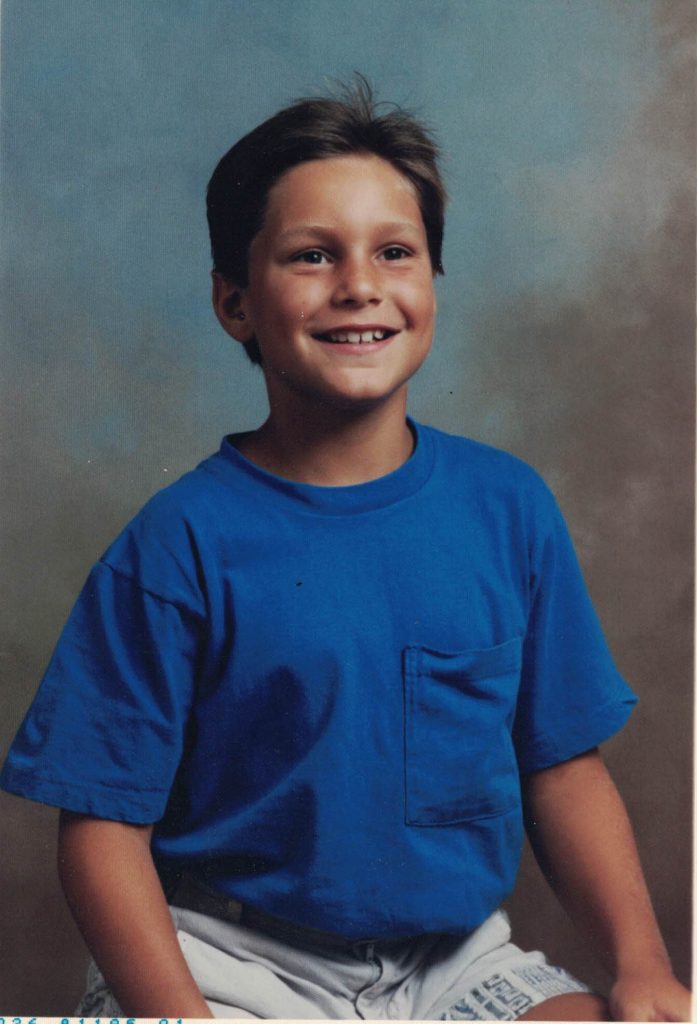
Age 12: The under-eyes era
I’ll never forget when my aunt Maggie commented on how everyone on my mom’s side of the family had dark circles under their eyes. And just like that, BDD released its grip on my hair and started to focus on my under eyes. BDD decided that I now had terrible dark circles, and they had to be fixed. I started sneaking into my mom’s bathroom and putting a small pump of her lotion under my eyes, similar to how I would see it used in commercials.
Eventually, I started getting ready in the dark. I did not like how the lighting above my mirror made my under-eye circles worse. I would keep the light on in the hallway so there was enough lighting to see so I could get ready — but not enough to see details on my face.
This was my biggest worry in the world. I was only in the seventh grade.
Age 15: BDD intensifies. The acne era
For a brief moment, I actually liked how I looked during my freshman year in high school. I had thinned out as I hit puberty and started getting compliments from my peers. In our new house the lighting was better in the bathroom, and I started feeling better about my under eyes. Then 15 hit.
Like every other teen on the planet, I started getting a few pimples. However, when I looked in the mirror, I believed I had severe acne. I hated my skin. I stopped wearing red shirts because I felt it made the acne stand out and look worse. I would go to the grocery store and try a new skincare product each week in a panic to find something to clear up my skin. I stopped taking pictures and refused to be in them.
In fact, I do not have a senior picture in my high school yearbook because I felt too hideous to take one. My mom mentioned once that she would replace a new picture of my sister on her wall at work with a current one each year, but I had the same one from freshman year because I refused to take new photos. Her co-workers thought I had died or something.
I got so desperate that I purchased makeup to start trying to cover the acne. When a girl from school asked me if I was wearing make-up, I denied it, and then freaked out and never wore it again. I began to be envious of girls that they could wear makeup and cover blemishes.
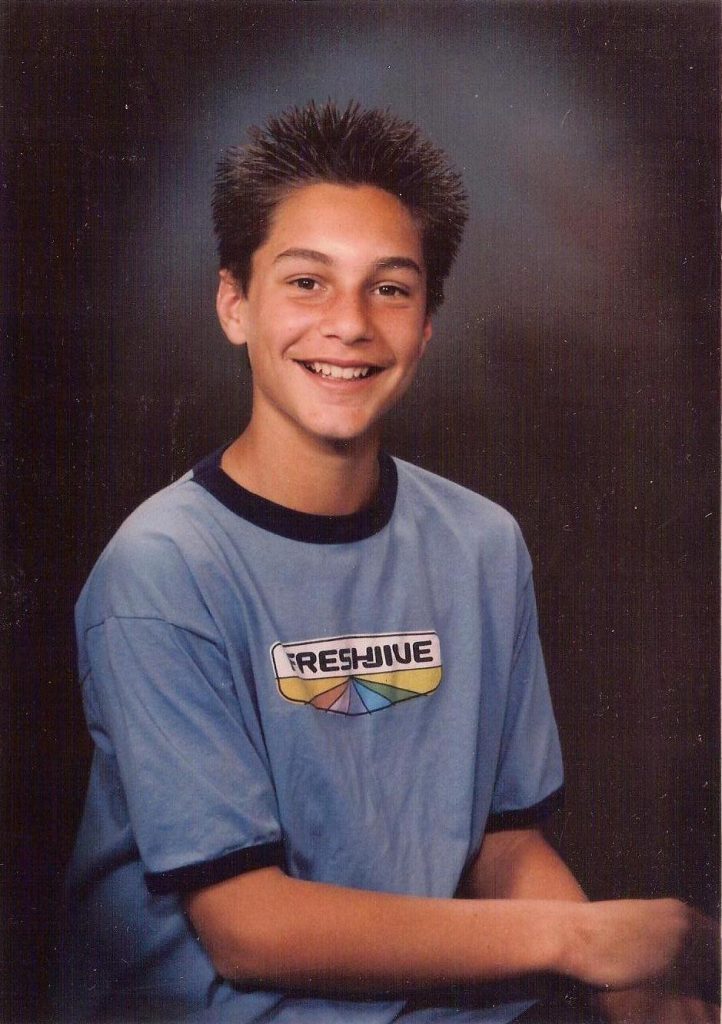
I would spend hours in the mirror, staring at how my skin looked. Every time I blew out a birthday candle, my wish was to wake up with clear skin. I would go to different dermatologists hoping for some magic solution to clear my skin. I begged to go on Accutane; however, no doctor would put me on it because they did not feel my skin was bad enough. I finally bullied an older dermatologist into putting me on Accutane and was on that for over a year.
I constantly sought reassurance and forced my family to close all the blinds and live in near darkness because I didn’t want them to see how bad my skin was.
Age 19: The skin, nose, and forehead era
The acne problem continued. I found a job at a restaurant that had a dining room with low mood lighting. I felt comfortable enough working in low light. I stopped going out during the day and would only go out at night so people could not see how bad my skin was.
Once, a co-worker asked me what my ethnicity was. I replied that I was Greek and Norwegian. The co-worker replied that she could see it because of my “Greek nose,” saying all Greeks had big noses. There it was — a new obsession. I added a nose job to the growing list of procedures I was going to have done as soon as I had more money.
Also at work, a barback made a joke once that my forehead was so big they could play a movie on it. Now I had another fixation.
I remember creating a list of all the things I needed to fix about my appearance to look “normal.” This included clear skin, a smaller nose, and a smaller forehead, amongst other things. No matter what I did, I wasn’t able to ever get to a place that I was happy with any of it. I began to give up.
Age 20: A suicide attempt
It all became too much. I had dropped out of college and quit my job. I no longer wanted to see old friends, or even new friends, because I felt I had become so ugly. I stopped going to family events because I didn’t want them to see me either. I became housebound, only leaving if necessary; usually to buy products and fulfill basic needs for the week. Living like this for nearly three years — the depression, the isolation, and hating everything I saw in the mirror — became too much.
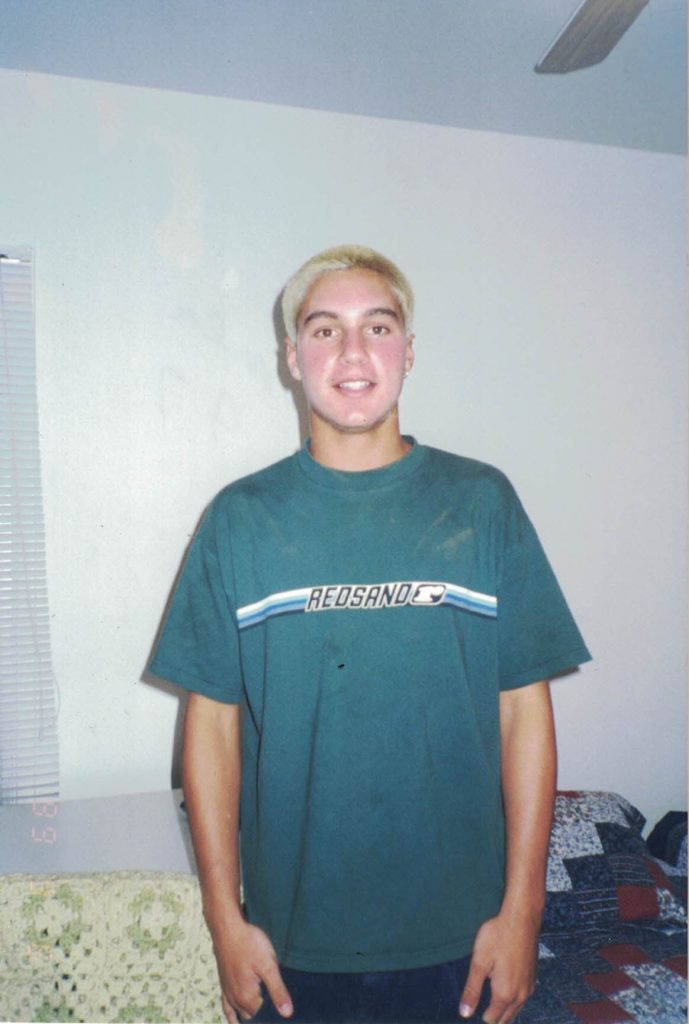
On one especially difficult night, I pulled my car into the garage, plugged up the exhaust pipe, and ran my car, hoping to die. My roommate came home and found me. Once she figured out what was happening, she stepped in, and I immediately got the medical help I needed. The only good thing that came out of this attempt was my family finally knew what was going on — and I could now get help.
Age 22: BDD treatment
After spending a significant amount of time going to therapists that either did not know how to recognize or treat the disorder, my mom found the International OCD Foundation. She located a specialist that treated BDD in Los Angeles.
In the treatment, utilizing cognitive behavioral therapy, the first focus was getting me out of the house. At this point, I rarely left the house except to go to treatment and when I did leave, I would cover a large portion of my face with the hood on my sweatshirt. I also addressed the flawed beliefs I held about my appearance. Additionally, I addressed the teasing, bullying, and trauma that helped influence my appearance obsessions. The therapeutic tools allowed me to leave my house, interact with others, and build personal relationships. I also focused on reconnecting with other prized traits and aspects of myself — tennis, martial arts, becoming bilingual, working with animals, etc. — to help me find value outside of my appearance. This overall helped to rebuild my self-esteem.
One specific challenge I overcame at the end of treatment was facing my fear of taking pictures. My family had no updated pictures of me, with the most recent photo of me being from the age of 15. This was especially disappointing for my grandmother and mom. As an exposure, my therapist and I decided I would take a photo at a portrait studio. That Christmas, I passed the picture out to my family members, with many mentioning that it was the best gift they could ever receive.
They finally had an updated photo of me, and I overcame my intense fear of taking pictures.
Age 24: Mourning the loss of what could have been
I concluded the treatment about two years later. I thought once therapy ended, my life would be all rainbows and sunshine — and I would love everything about my appearance. That is not what happened at all. I learned that I would have continued negative thoughts and feelings about my appearance, but I now had the tools to deal with them — and that I could appreciate.
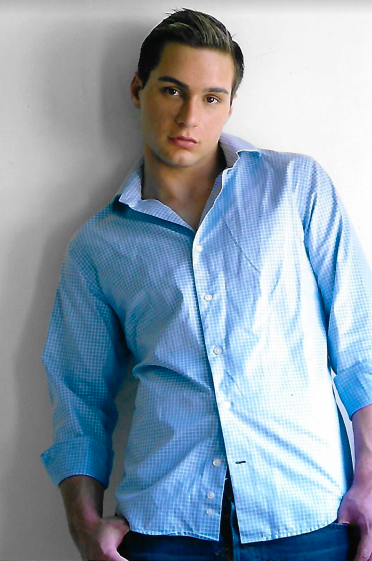
What I dealt poorly with were the many years I had “lost” to BDD. When I was younger, I had assumed at this age that I would be directing music videos (a dream of mine), dating, perhaps own a house, have a college degree, and travel. Instead, I spent most of my life up to this point suffering from this disorder.
I became outraged and depressed. I felt a bomb went off, and I was not ready to pick up the pieces. It was not until an intervention from my mom and a younger sister that I was able to turn it around. They pointed out that I could not do anything about all the years I had lost to BDD, but now in my life, it was a decision I was making to be angry. That anger prevented me from moving forward in life. I realized that they were right, and I had to accept that having BDD was out of my control. I was now in a better place and it was time to move forward.
Age 27: The era of hair, part 2
After treatment, I entered a contest held by MTV. They were searching for local, on-air talent. I won the contest, and that began my career as an on-camera entertainment reporter. I started working for major media outlets that included Billboard, a local Fox affiliate, MTV and MTV 2, GMA, and international entertainment networks.
Additionally, at this time I began opening up about my experience with BDD. I was a guest on The Montel Williams Show multiple times, Dr. Drew’s talk show, a major news network in Norway, and Fox San Diego — amongst others.
Seeing myself on-camera brought on new BDD obsessions. BDD ran out of material, so it went back to focusing on my hair. In addition to obsessing about my hair needing to look perfect, I started to fear that I was going bald. I freaked out and ended up visiting a doctor who determined that I was not experiencing any hair loss. However, I did not accept his assessment and I diagnosed myself with hair loss. I found a doctor willing to give me a prescription for a powerful medication (with many side effects) that helps prevent hair loss. I also bought different hair-growth shampoos and other hair care topicals.
This all occurred when I had recently completed treatment. Initially, I got swept away in the BDD obsessions, but ultimately was able to turn it around using the tools I had learned in therapy. I learned to be at peace with my hair and dropped many of the compulsions. I stopped constantly looking in the mirror, watching every TV appearance of mine back, and comparing my current hairline to pictures of my younger self.
Age 29: Hair, hawline, hips, stomach, and weight
I continued to use the tools learned in treatment, and I was not suffering nearly as I was before treatment. However, intrusive thoughts about my image were present. For instance, when watching myself back on camera I often found myself unhappy with my weight. I obsessed over my hips and stomach. I felt my stomach stuck out and believed I had wide hips for a boy. To camouflage these fears, I wore layers of clothing on-camera to cover my stomach.
I received a comment once from a video editor mentioning that I did not have a strong jawline. He mentioned that there was a procedure available that would reduce excess fat and strengthen my jawline. I began to Google search the procedure. Luckily, it was expensive, so I never did it. In fact, thank goodness I never had the money to do any of the procedures I wanted to do!
The hair obsession was still a problem, and I often found myself running to hair and makeup during commercial breaks to fix and obsess over my hair. Before treatment, these obsessions would have warranted hours of compulsions, ultimately leading me to quit my entertainment industry job. However, utilizing the tools allowed me to push through these distressing experiences, I became successful in my career. The majority of the time, I focused on my work, enjoying the perks and the friends I was making in the field. BDD was never able to be in control.

Now: The era of aging
Next, I began to have an obsession over aging. I felt I had a gray hair once (which my hairstylist dismissed). I developed my first wrinkle on the side of my eye, and when people guessed my age, they were not guessing an age as low as they once were. I wondered why aging bothered me so much … and then it hit me. I feel as though I have lost so many years of my life to this disease, and I wanted that time back. Inside, I feel so much younger than I am. I spent so many years “stuck” and unable to move forward because of my appearance obsessions. Now that I am doing much better with the tools learned in treatment, I am living a fuller life. Aging threatens that. I want to appear younger so I can do the things my younger self never was able to do. However, I have realized that this is all part of the BDD as well. This belief that I can only do certain things at a certain age is distorted thinking.
That is where radical acceptance has come into play. I have accepted that this is how I look. I promised my therapist, and promised myself, that I would never get any major surgeries or medical treatments for my appearance. So this is me. I can exercise, drink water, get adequate sleep, and take care of my appearance in a normal way, but other than that, this is how I look. Since the radical surgeries are off the table, I need to love what I have — and I am doing that. It is never easy with BDD, but it is a process that I am so much better at than ever before.
Looking forward
As I conclude, thinking about how much my younger self has had to suffer is difficult. However, it is not all sad. I was able to receive excellent treatment when many others are not. I did not successfully take my life while others have. I have been able to advocate for others, spread awareness about BDD, and help stomp out mental health stigma as well. I even became a therapist so I could help other individuals with BDD get better.
I am not perfect, and maybe I never will be, but the thoughts and feelings no longer control my life. I decide what I want to do based on my goals and values, and not my fear. I have learned to let go of the time I lost to this illness and instead focus on the lessons and wisdom I received from the hard times.
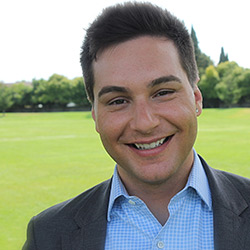
And I am able to share with you today my story of triumph so that you will know that you can recover, too. I spent too many years letting my appearance concerns consume me and I am done doing that.
I am happy to say that I no longer define periods of my life based on my appearance obsessions as I did in the past. Now, like others, these stages of life are characterized by positive milestones that have occurred — including earning a master’s degree, becoming a therapist, traveling to dream locations, and moving into a beautiful new place!
As I finish writing this post, I realize that I have healed a bit more just by again sharing my story. If you are in the thick of it, you too can recover. It will not be easy, but it is so worth it. Then you too can share your success story.
Chris Trondsen, M.S., AMFT, APCC serves as a member of the International OCD Foundation’s BDD Special Interest Group and is one of the IOCDF’s lead ambassadors. He also currently serves as Vice President of OCD Southern California, an official affiliate of the International OCD Foundation. Chris is a clinician specializing in the treatment of BDD at The Gateway Institute in Southern California. When not treating clients with the disorder, he works as an on-camera entertainment news host in Los Angeles. Feel free to direct any questions or comments to ChrisTrondsen@GatewayOCD.com.

Great article and an inspiring story, thanks you very much for sharing this it will inspire a lot of people who are suffering from body dysmorphic disorder.
How can I connect with him for my son? I would love to talk with him.
Hi Stacy! Chris Trondsen hosts livestreams with us on a weekly basis where viewers can ask questions/connect with him in real time. The next livestream will be this Wednesday (Nov. 16) at 12pm ET and you can tune in at iocdf.org/live.